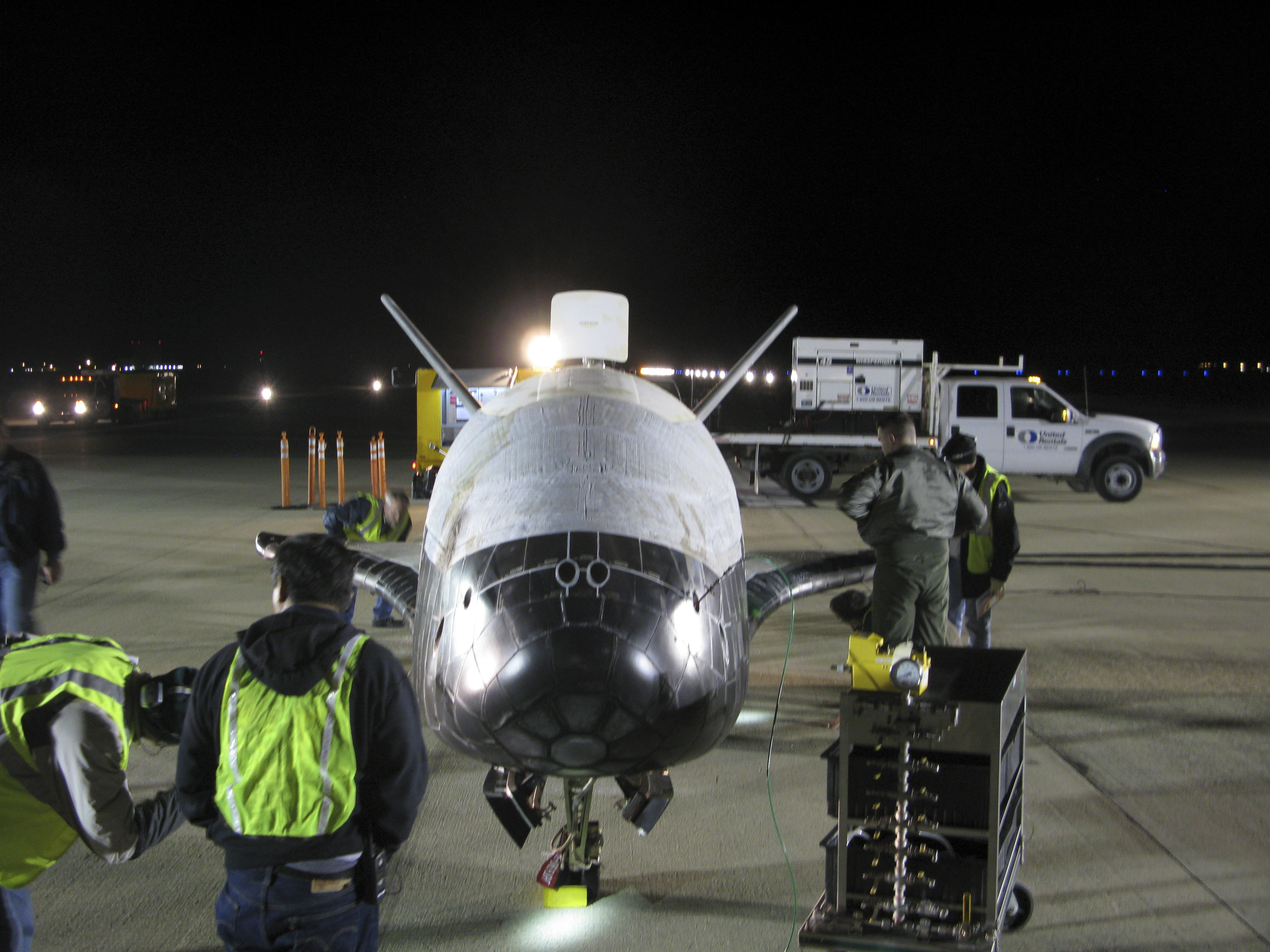The spacecraft, which is a scaled-down version of an airplane-like space shuttle, was launched on an undisclosed mission on April 22 and landed last Friday

Vandenburg Air Force Base, California - The Boeing Company announced that over the past weekend the X-37B unmanned space shuttle landed under its own power, after successfully completing its first test mission. The X-37B, which was launched on April 22 of this year from Cape Canaveral, landed last Friday (December 3, 2010) at 1:16 am, California time, at the end of its first test mission, which lasted more than 220 days.
The X-37B spacecraft is the first unmanned US vehicle to fly back into the atmosphere and land independently. Since only space shuttles have been able to land on Earth until now, the completion of the first test mission effectively provides proof that unmanned spacecraft are able to exit and reenter the atmosphere safely.
"We congratulate the US Air Force Rapid Capabilities Wing and the 30th Space Wing at Vandenburg Air Force Base on the success of the mission," said Paul Rasnock, Boeing's vice president of experimental systems and director of the X-37B program at Boeing. "Through this experiment, we are actually opening a new era in the history of space exploration, and we await with anticipation the second launch, which will be carried out during 2011. We at Boeing are proud of our success in offering the American Air Force unprecedented capabilities, through a combination of advanced air and space technologies with a suitable and economical unmanned vehicle" .
The uniqueness of the X-37B program is its ability to offer the US Air Force an unmanned and reliable platform for space testing, capable of performing repeated missions. The goals of the test platform are to conduct experiments in space, while reducing the risks and continuing the technological development of reusable space platforms for the benefit of future space missions.
For an entire decade, the Boeing Company invested in the unmanned spacecraft, during which the company provided support to the US Air Force, NASA and DARPA in a number of similar and complementary space programs.

9 תגובות
For a mission whose details have not been revealed..
the name of the spaceship; protection. [X37B]
+ laser energy
+ plasma energy
And this is basically the magic wand of the United States Army.
— Unmanned spacecraft
— which is capable of being outside the open Earth system
— This is basically the top technology.
-+-+-+-+-+-++-+-+–+-The spaceship is actually -Doomsday weapon-.
http://www.space.com/11006-air-force-x37b-space-plane-secret-launch.html
It is true that there is a lack of knowledge....but with a little initiative and contribution it is possible to establish a center on the subject at the Technion or in the other universities as they have recently established several nano-technology centers, a department can be opened within those centers - the study of fireproof tiles can also promote the field of armor and several other subjects.
Vitaly,
Interesting and correct idea. The problem is that, as far as I know, in Israel there is no knowledge in the field of technology for building tiles resistant to extreme temperatures, which would allow such a UAV to make repeated flights while crossing the atmosphere.
Interesting to the interest in the same matter, I read the article about it being an excellent and cheap idea to launch.
If Americans can build such a UAV that doesn't seem too big, why wouldn't the State of Israel invest in the development of UAVs in the field of space? In my opinion, this is an area that Israel can lead in. We have the most advanced knowledge and technology in the world in this area.
In my opinion, if we invest in this area where we have an advantage and do not require too many resources, we can be a space-launched UAV powerhouse.
In the meantime, the ability to fly into space to perform experiments and tests with a frequency comparable to the ability to take off an airplane is important, I also think that this will push even faster the development of cheaper launch technologies for larger, manned vehicles.
Is this all his size or will he grow further?
Looks like a scaled down version of the space shuttle